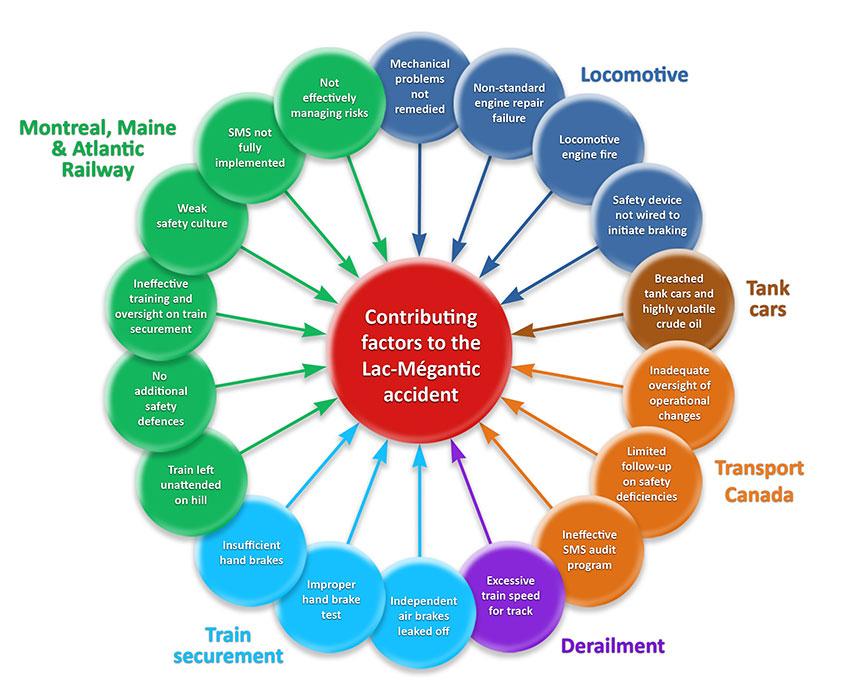
1 minute read
Figure 11: Causes and contributing factors to Lac-Mégantic derailment
persons offering dangerous goods for transport or import by rail to have Emergency Response Assistance Plans (ERAPs), removed the least crash resistant DOT-111 tank cars from transporting dangerous goods, and resulted in the design of a new tank car (DOT-117) for hazardous good transport (see Annex M: Changes in regulations involving the transportation of crude oil in Canada and the United States resulting from the Lac-Mégantic derailment (not exhaustive) for regulation changes and description of DOT-117 tank car). In 2015, Transport Canada issued requirements that (1) all companies transporting 1.5 million tonnes of crude oil per year in rail cars are required to have a minimum of $1 billion in liability insurance coverage and (2) a levy of $1.65 for every tonne of crude shipped is to be placed in a supplementary shipper-financed fund to be used in the event of a railway accident involving crude oil [TC, 2016]. The Canadian Pacific Railway (CPR) indicated that it would prefer not to transport crude oil and other dangerous goods [Atkins, 2015a] but was told that “Transport Canada does not have any plans to review the common carrier obligations” of the Canada Transportation Act that require railways to haul any and all legal goods in rail cars that meet safety standards [Atkins, 2015b].
Figure 11: Causes and contributing factors to Lac-Mégantic derailment
Advertisement





